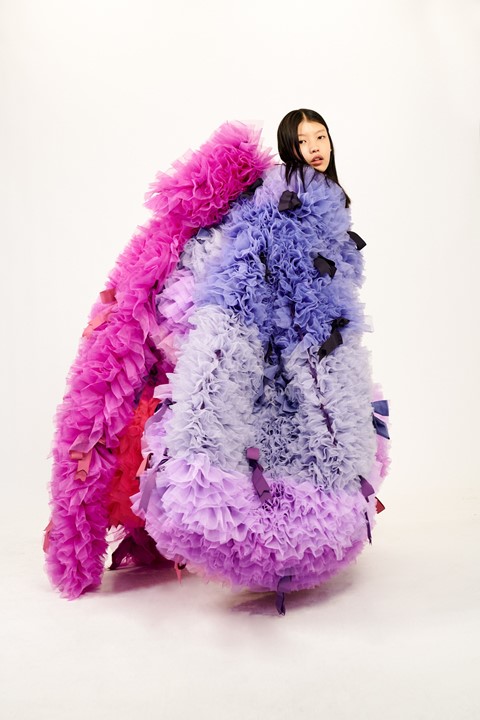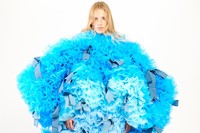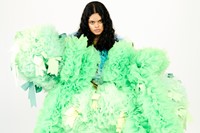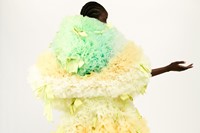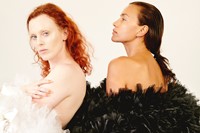Following Tomo Koizumi’s New York Fashion Week debut, which sparked a social media frenzy, the Japanese designer opens up about that moment – and his Spring/Summer 2020 collection
We’ve come a long way from the days when fashion shows played out to an elite group of industry figures behind a set of firmly closed doors. Today, celebrities and social media influencers make up much of the front row, while the show itself is live-streamed around the world, with brands clamouring for attention through ever-more elaborate ploys to gain clout and column inches.
Every so often, though, amid the chaos of the fashion circus, moments of authentic, pure, unadulterated magic occur. Tomo Koizumi’s Autumn/Winter 2019 show was one such moment. Just over six months ago, if you’d have asked someone if they were familiar with the work of the Tokyo-based designer, you’d have likely been met with a resounding ‘no’. Though he’d previously created pieces for Lady Gaga, Koizumi’s fame was still largely limited to Asia.
But that changed in February, when Koizumi made his New York Fashion Week debut in the basement of Marc Jacobs’ SoHo store, with help from super-stylist and LOVE magazine’s editor-in-chief Katie Grand, who discovered his work through Giles Deacon’s Instagram page and slid into his DMs (along with Jacobs himself).
With invites sent out only hours before, the fashion crowd descended on the Madison Avenue space as Koizumi presented his first fully realised collection, made up of a series of enormous origami-like confections in a kaleidoscope of candy colours and modelled by an all-star cast including Rowan Blanchard, Gwendoline Christie, Bella Hadid, and original supermodel Karen Elson.
The show immediately went viral, with videos of the event racking up hundreds of thousands of views on Instagram. The reception was beyond anything he had ever anticipated: “In all truth, I didn’t know what to expect,” he says over the phone, speaking days before his Spring/Summer 2020 show. “I just worked hard to make my pieces and bring them to New York. In terms of how people would react, I didn’t have any preconceived ideas.”
Despite his lack of expectation as to how the collection would be received, Koizumi says he was “overjoyed” that people loved the show, which is not surprising considering that a viral moment like this is something many emerging designers dream of. But part of its success on social media – and the fact that, in the days that followed, you couldn’t scroll through Instagram for more than a few seconds without seeing Koizumi’s brilliantly beautiful bath poufs – was down to its shock factor, which isn’t something easily recreated.
When it came to his follow-up show, held once again at Marc Jacobs’ store on Friday, a viral moment seemed far from the designer’s mind. “I don’t think it’s possible for there to be the same level of adoration or the same amount of attention as I did with the first show. I feel like most people were shocked by how extravagant it was,” he says. “While I’ll create something similar because it’s my style, I don’t expect a response that could be perceived as bigger than the one after the last show.”
Accordingly, he stripped things back – at least, at much as his dramatic gowns allow – reducing his cast to just a single model, Ariel Nicholson, whose hair was slicked straight up like a punky troll courtesy of Guido Palau (Pat McGrath was once again on make-up). As the audience stood on the floor above looking down, Nicholson was dressed in one huge tulle look after another, standing in the middle of the floor and contorting her body so as to allow the onlookers a better chance to see the frothy details of each wildly unique piece (in rehearsals, Koizumi explained, Nicholson had gotten so carried away with her movements that she ripped a hole in one of the pieces).
Inspired by Japanese culture, anime, and Sailor Moon, in the end, the offering of seven pieces ended up no less impressive – indeed, it ended up all over Instagram once again. But Koizumi is quick to dispel any idea that that’s of any importance to him: “I just want to give something back to the world with my creations,” he says. “My form of expression is my gift to the world.”
